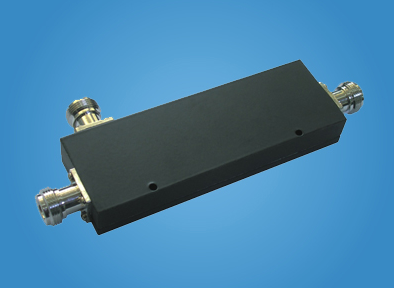1. Composition of switch circuit
When the input signal ui is low, the transistor V1 is in the cut-off state, the current of the light-emitting diode in the optocoupler B1 is approximately zero, and the resistance between the output terminals Q11 and Q12 is large, which is equivalent to the switch "off"; When ui is high level, v1 is on, the LED in B1 is on, and the resistance between Q11 and Q12 is reduced, which is equivalent to the switch "on". The circuit is in a high level conduction state because Ui is low level and the switch is not connected. Similarly, because there is no signal (Ui is low level), the switch is on, so it is in a low level conduction state.
2. Composition of logic circuit
The circuit is an AND gate logic circuit. Its logic expression is P=A.B. The two photosensitive tubes in the figure are connected in series. Only when the input logic levels A=1 and B=1, the output P=1
3. Composition of isolated coupling circuit
The linear amplification effect of the circuit can be guaranteed by properly selecting the current limiting resistance Rl of the luminous circuit and making the current transmission ratio of B4 a constant.
4. Compose high-voltage voltage stabilizing circuit
The driving tube shall use transistors with high voltage withstand. When the output voltage increases, the bias voltage of V55 increases, and the forward current of the light emitting diode in B5 increases, so that the inter-electrode voltage of the photosensitive tube decreases, the bias voltage of the adjusted tube be junction decreases, and the internal resistance increases, so that the output voltage decreases, and the output voltage remains stable
5. Automatic control circuit of hall lighting
A is four sets of analog electronic switches (S1~S4): S1, S2 and S3 are connected in parallel (which can increase the driving power and anti-interference ability) for the delay circuit. When they are connected to the power supply, the two-way thyristor VT is driven by R4 and B6, and the VT directly controls the hall lighting H; S4 and the external photosensitive resistor Rl constitute the ambient light detection circuit. When the door is closed, the normally closed reed KD installed on the door frame is affected by the magnet on the door, and its contact is open, S1, S2 and S3 are in the data open state. In the evening, the host went home and opened the door. The magnet was away from KD, and the KD contact was closed. At this time, the 9V power supply will be charged to C1 through R1, and the voltage at both ends of C1 will soon rise to 9V. The rectifier voltage will make the LED in B6 glow through S1, S2, S3 and R4, thus triggering the two-way thyristor to turn on, VT will also turn on, and H will turn on, realizing the automatic lighting control function. After the door is closed, the magnet controls KD, the contact opens, the 9V power supply stops charging C1, and the circuit enters the delay state. C1 begins to discharge R3. After a period of delay, the voltage at both ends of C1 gradually drops below the opening voltage of S1, S2 and S3 (1.5v), and S1, S2 and S3 resume to be disconnected, resulting in B6 cutoff, VT cutoff, and H extinction, realizing the delayed lamp off function.
Post time: Feb-02-2023


